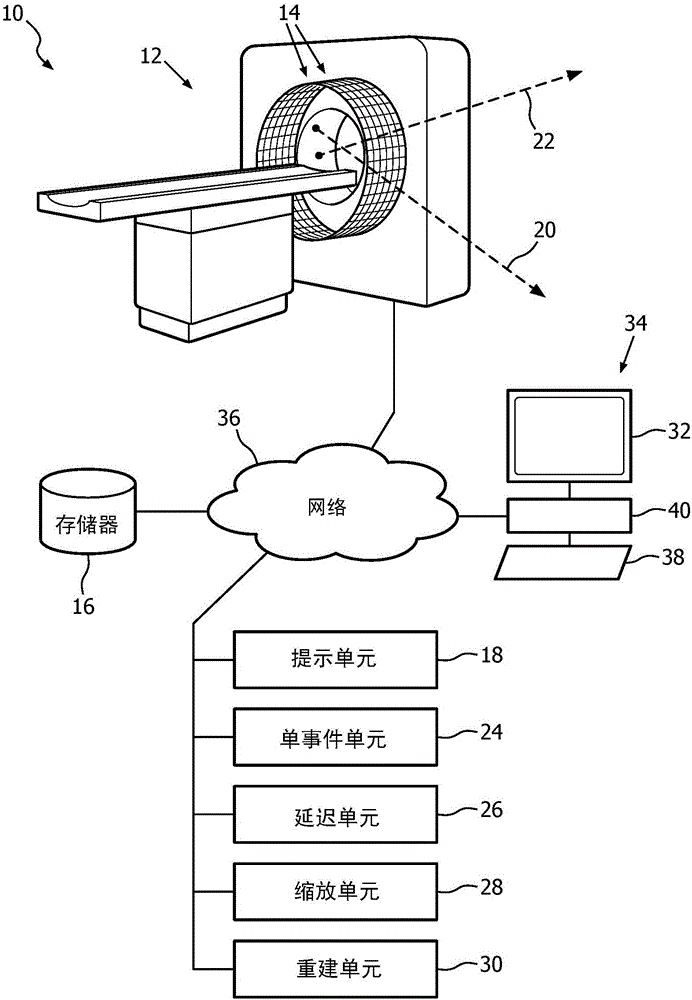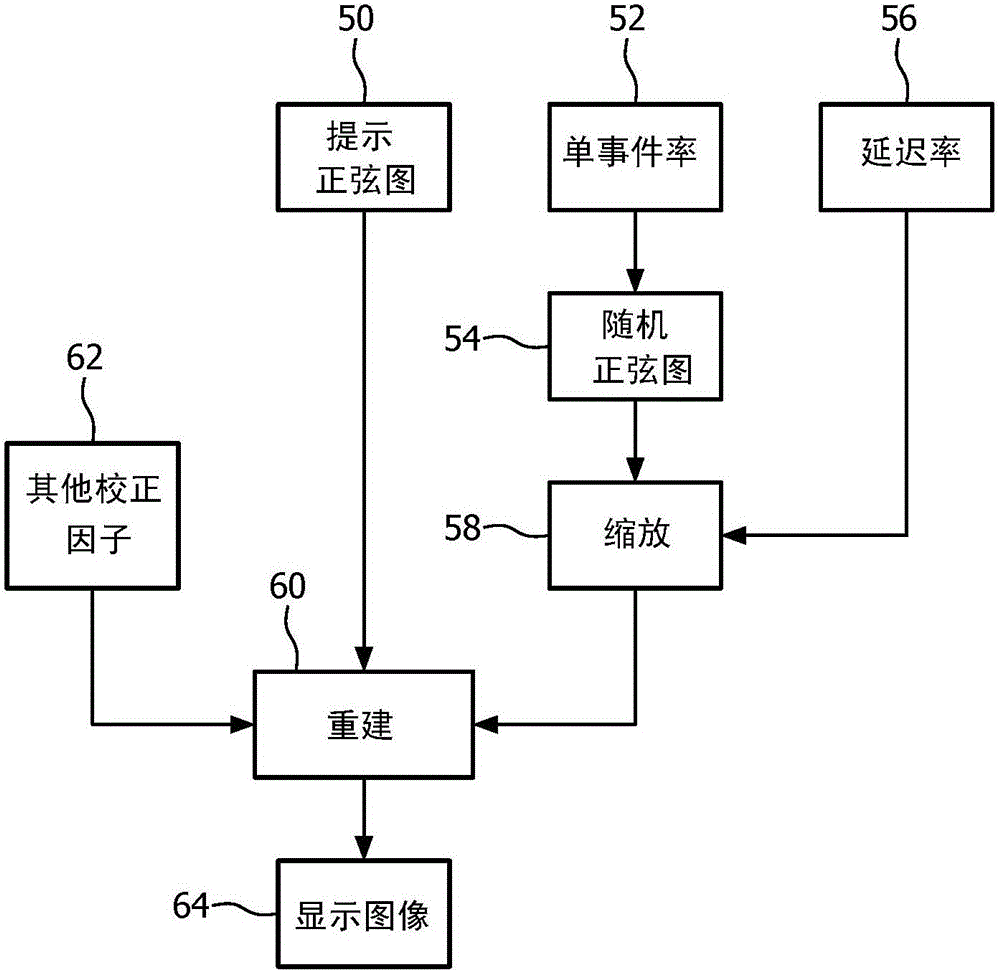PET random coincidence correction
A sinogram, positron emission technology, applied in the field of nuclear medicine imaging, can solve the problem of increasing noise
- Summary
- Abstract
- Description
- Claims
- Application Information
AI Technical Summary
Problems solved by technology
Method used
Image
Examples
Embodiment Construction
[0018] refer to figure 1 , schematically illustrates an embodiment of a PET system 10 with random coincidence correction. The object is placed in the examination area of the PET scanner 12 . The PET scanner 12 includes a plurality of rings of detectors 14 that detect gamma photons originating from positron annihilation events from radiopharmaceuticals. The time and energy of each detected gamma photon is preferably recorded in the data store or memory 16 in list mode. The recorded gamma photons are filtered using time and energy windows to identify different coincidences, such as cues, scatter, single events, delays, etc. For example, prompts conforming to include in the time window t w Photons that are detected at both detectors within (eg, on the scale of 2-6 nanoseconds) and satisfy a threshold energy level (eg, about 511 keV). The PET scanner 12 can include a counter that counts the number of cue coincident gamma photons detected at each detector and the number of de...
PUM
 Login to View More
Login to View More Abstract
Description
Claims
Application Information
 Login to View More
Login to View More - R&D
- Intellectual Property
- Life Sciences
- Materials
- Tech Scout
- Unparalleled Data Quality
- Higher Quality Content
- 60% Fewer Hallucinations
Browse by: Latest US Patents, China's latest patents, Technical Efficacy Thesaurus, Application Domain, Technology Topic, Popular Technical Reports.
© 2025 PatSnap. All rights reserved.Legal|Privacy policy|Modern Slavery Act Transparency Statement|Sitemap|About US| Contact US: help@patsnap.com



